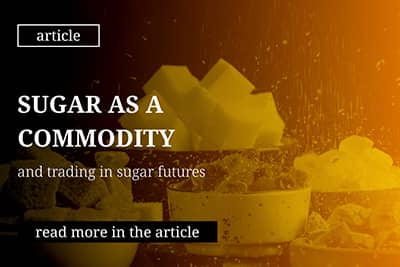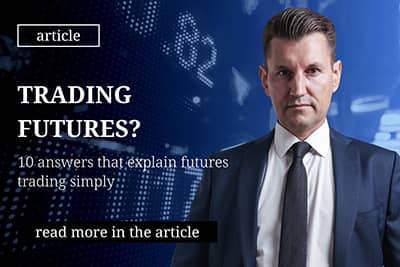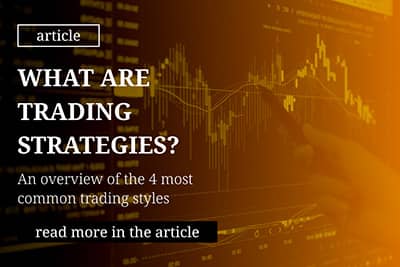Small account, big trading with futures - how long does it take?
Hello Insider, today we calculate ourselves as millionaires! We make a realistic projection and compare different account sizes with each other. How long does one have to wait for their million and what should the starting account size be? We'll clarify it!
Do you know your trading goal?
Only when you define a goal can you plan your journey accordingly.
If your goal is to crack the mandatory 1 million euro mark, let's see how long it will take. Not everyone has the same financial conditions, so we will compare four typical account sizes.
InsiderWeek has already proven several times that even small accounts between 10,000 € and 15,000 € can trade big. The main account started at only $14,000 in 2014 and is now at $600,000. Two competitions with a starting capital of $10,000 were also completed with more than 100% profit. The second participation was even more successful with a 156% profit and proof that the first attempt was not a coincidence.
Let's first look at the different account sizes to identify the advantages and disadvantages. As there are now mini or micro-futures available for more and more underlying assets, we can start with a small account below 10,000 €, unlike a few years ago. A mini or even micro-future is also traded on the real exchange, just like a normal future. However, it only moves a tenth or a hundredth of the money. This allows you to better control your risks and adjust your money management to the account size, but the account will grow slower than with whole future contracts. However, a total loss is less likely. Since we are very risk-aware traders who place great value on appropriate risk and money management, the mini-futures suit us very well.
We compare four accounts with each other:
- a very small account of less than 10,000 €
- a small account of 15,000 €
- a medium-sized account of 50,000 €
- and a large account of 250,000 €
10,000 € account and less:
- only suitable for mini and micro-futures, as no full contracts
- the capital increase takes place slower, as the leverage is smaller with mini-futures
- but the risk is lower or can be controlled, like with a large account
- even diversification and position management are possible
- total loss would not be as painful as with a large account
15,000 € (whole future contracts):
- stop at most -1,000 €
- only 1 position at a time
- no diversification
- little room for error
- balancing act between return and ruin
- patience
- but can also be combined with mini and micro-futures for faster account growth and diversification
- a relatively small sum, so a total loss would be less painful than a large sum. A new deposit would be realistic.
50,000 €:
- diversification is possible, so several positions in parallel (even with whole future contracts)
- larger stops, so more trades come into question
- drawdowns percentage smaller
- partial positions possible / split positions
- mistakes can be expensive. This is felt more with large accounts than with smaller ones. However, mistakes are often associated with a total loss with smaller accounts, with larger ones only painful
- psychological stress is greater if one is not yet used to the account size
250,000 €:
- good diversification possible
- larger stops
- percentage small drawdowns
- good position management (partial positions)
- portfolio trading to reduce drawdown. So opposing positions allow loss trades to be compensated more quickly.
- mistakes will be even more expensive. Logically, large accounts equal more expensive mistakes.
- psychological stress will be greater. But it's all a matter of practice.
- extra effort due to multiple positions.
Here you can see a comparison of the different account sizes and the impact on the possible, sustainable loss series with a constant stop loss size of 500 €.
| Starting Capital | One million at 50% p.a. after | One million at 25% p.a. after |
|---|---|---|
| 5.000 € (Mini Futures) | 13 years | 24 years |
| 10.000 € | 11,5 years | 21 years |
| 15.000 € | 10,5 years | 19 years |
| 30.000 € | 9 years | 16 years |
| 50.000 € | 7,5 years | 13,5 years |
| 100.000 € | 6 years | 10,5 years |
| 250.000 € | 3,5 years | 6,5 years |
Of course, with larger accounts, we would also increase our position. This table is only meant to show that with larger accounts, we can adjust better and reduce risk.
What is the most sensible account size to start with?
From our experience, we can only say that a small account is harder to trade big. Errors are more costly, the drawdowns are much larger in percentage, and the lack of diversification options makes trading difficult for us. Nevertheless, we have proven several times that small accounts starting from 10,000€ can also trade big. And it is easier to handle psychologically if it does end in total loss. On the other hand, with a medium account, losing an amount over 50,000$ is probably very stressful for most people. However, the probability of a total loss is also much lower due to the higher loss series that can be absorbed and the possibility of diversification.
Today, there are already a large number of mini- and micro-futures that in theory allow us to start with small accounts without increasing the risks. However, this possibility also attracts many aspiring traders to the market who do not have the necessary experience and choose a smaller amount specifically for that reason. Starting with a small account and betting on mini-futures does not replace a solid education.
Do you just want to gamble a bit or start a serious business?
There is nothing wrong with gambling your money on the stock exchange as a pastime. Just like you could go to the casino if the short-lived fun and thrill is the goal.
However, if you want to do it right and view trading as a business, then you should treat it as such. First and foremost, this includes a solid education, a profitable strategy, and the necessary trading capital.
- Training: As mentioned in previous articles, training is not a requirement to start trading with real money on the stock market. However, in order to be successful in the long term and grow your trading capital, it is a necessity. The entry barriers are low, which motivates many aspiring traders to start trading with real money right away. This mistake is always punished in the stock market. As in life, you can only be successful in the long term if you learn your trade properly. The stock market does not make an exception in this regard.
- Profitable Strategy: Training is the foundation of trading. But without a good strategy, you can't build on it. If you want a nice building, you need to work out a strategy or learn a proven strategy from someone.
- Capital: Once the first two points are fulfilled, it's all about the right account size. If possible, this should correspond to a medium-sized account, so that the trading business also yields corresponding fruits, is fun and the compounding effect can develop more strongly.
Let's compare trading to a physical business:
For example, if you want to start a small business, a kiosk or bakery, you need know-how, a strategy and money available. You wouldn't think of starting with 2-5 thousand euros, with no plan, that wouldn't work.
In particular, capitalization is an important point. If the kiosk operator does not invest enough money into his business, it is probably not competitive. He cannot withstand a drought and would be much more likely to go bankrupt than if he started with strong capitalization and a good plan. The stock market is the same.
Advantages of large accounts
- Trade multiple positions simultaneously without increasing risks, allowing the account to grow faster and reach the overall goal more quickly.
- More trade opportunities due to larger, manageable stop losses. With small accounts, only a few trades will pass risk management.
- Errors will be forgiven and not immediately wipe out the account
- much smaller percentage drawdowns
- Compound interest effect can unfold faster
- Loss series can be longer without endangering the account.
Especially low drawdown and compound interest effect are much stronger with a well-capitalized account. Since we are not playing monopoly with play money, but building wealth, we should start the trading business with a well-capitalized account.
Now to the question that many have probably asked themselves. When did you reach the one million? Let's do some rich calculation:
InsiderWeek has not yet reached the million on the Pro-Account, currently it stands at around 600,000€, but we can still make a realistic estimate. Even though the account has been able to achieve an average performance of 77% per year, we should aim for an average of 50%. The first years, when the account is still small, the percentage growth is higher than when the account is already 6 digits.
Although it is not good to talk about unhatched eggs, it can be assumed that InsiderWeek will reach the goal of the first million at the latest within the next 2 years. Going from $14,000 to $1 million in under 10 years would definitely be a proud result.
Let's take a look at the table to compare the different account sizes:
| Account Size | Risk per trade with 500€ stop loss | Sustainable loss series |
|---|---|---|
| 10.000 € | 5 % | 20 |
| 15.000 € | 3,33 % | 30 |
| 15.000 € | 2 % | 50 |
| 30.000 € | 1 % | 100 |
| 50.000 € | 0,5 % | 200 |
| 100.000 € | 0,2 % | 500 |
Conclusion
In addition to the previously mentioned benefits that a large account offers, it also gets you closer to the goal of the first million faster. Even an initial capital of 5,000€ more can shorten the time to reach a million by more than a year. As you can see, the dream can also come true with a small account of 5,000€, but it goes much faster with larger accounts.
Now I hope that you too have become hungry for the million! 🙂 Besides the previously mentioned requirements, it also requires patience and discipline, then the goal is achievable, as InsiderWeek proves every week.
Curious to learn more?
Get your hands on Max Schulz’s book by downloading it today! Free of charge.







